Have you heard of the European nightjar?
A very special bird whose population is increasing in the UK :-)
There are so many reasons why I adore this bird - mostly it’s the feather camouflage, snake-like mouth and gorgeous black eyes like jewels.
They also have the common name goat sucker, taken from the ancient folklore that they would suckle milk from the animals, causing them to go dry or maybe even blind. Of course, this isn’t true as they enjoy to eat insects like moths and beetles.
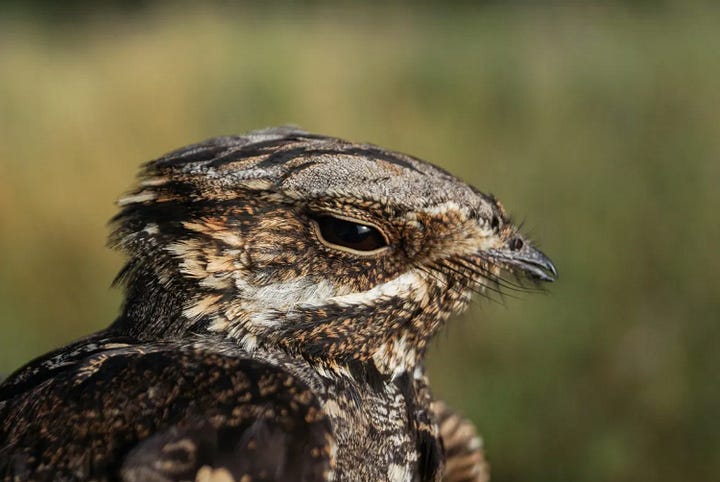
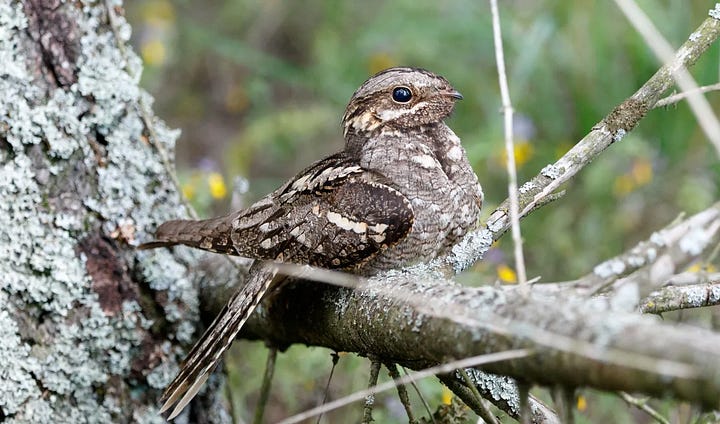
I signed myself and my partner up to one of Ben West’s iconic bird walks and it certainly didn’t disappoint.
Ben’s Nightjar Walk
Ben is very knowledgable about all things nature - the walk included a little on foraged plants, other mammals and birds, as well as fungi.
Ben offers:
Bird walks specific to the nightingale (April -May) and the nightjar (May-July)
Fungi walks (October- November).
6 part bird ID course in Spring (identifying up to 90 species)
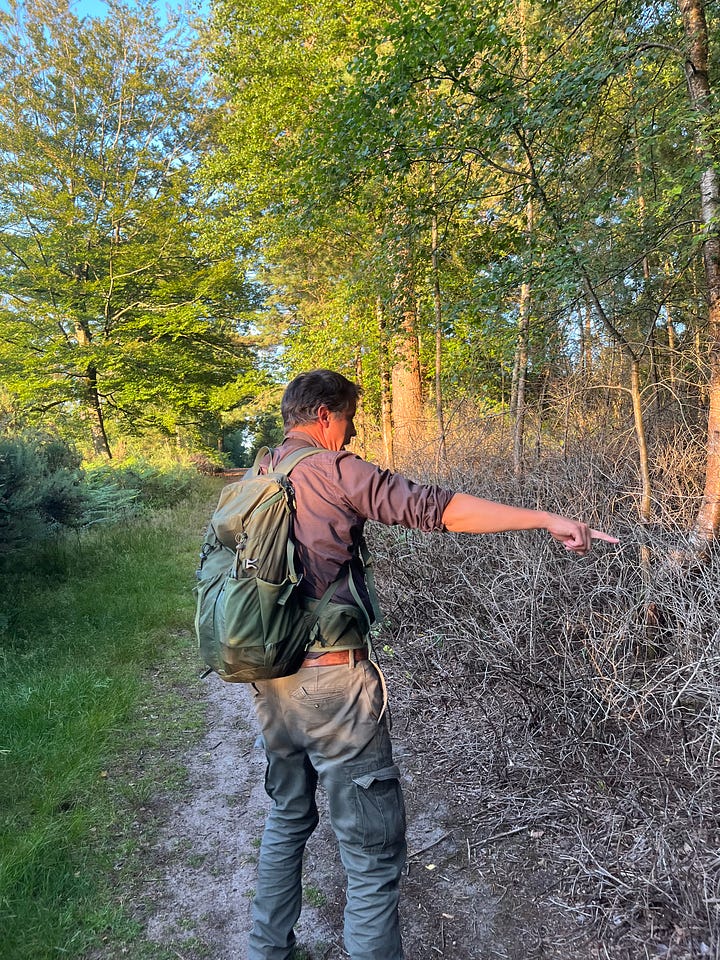
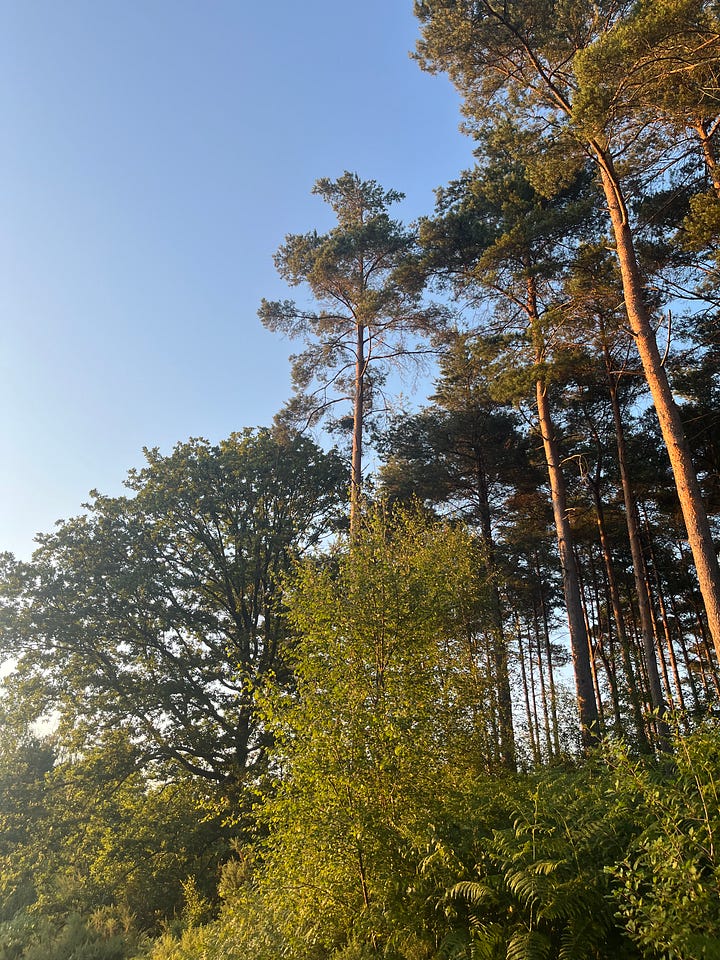
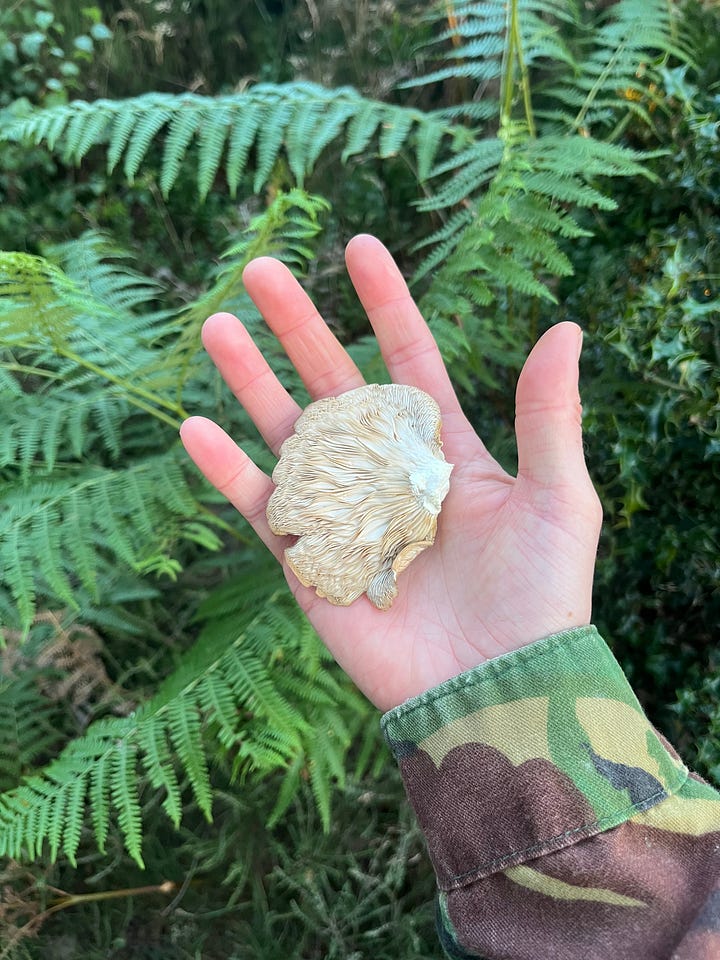
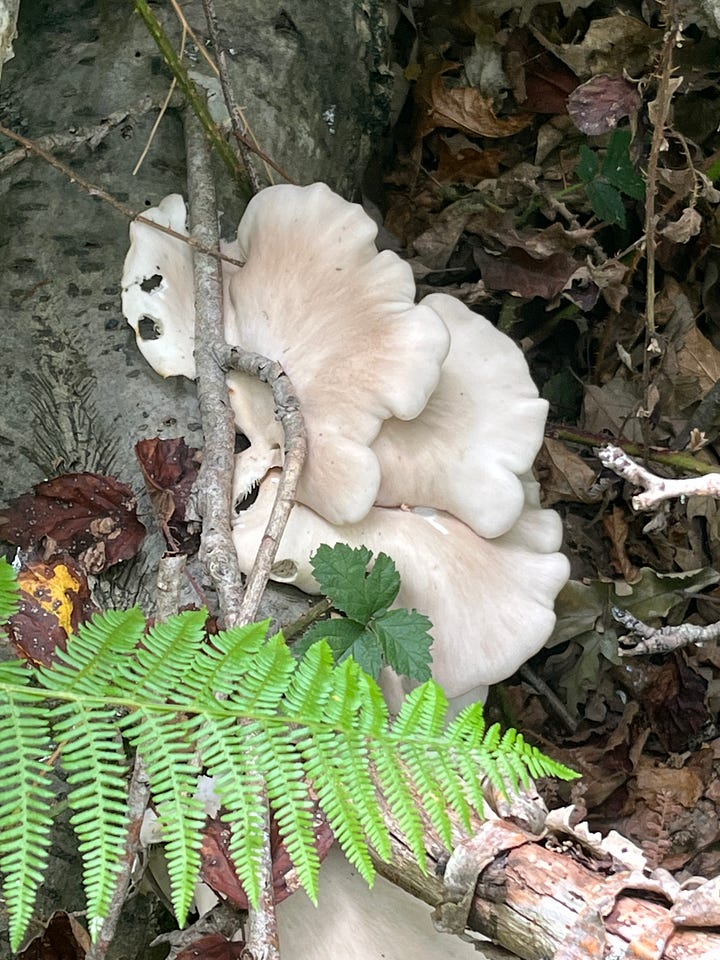
He discussed native and non native trees, elaborating on the oak trees which were beginning to die back in the heathland, which will in turn affect the insects and mammals which use these trees.
The walk led us along the pathways through the woods and alongside a huge heathland - filled with a few young pine trees, brambles and heather. As we walked, we munched on wild bilberries and identified bird calls, stopping to look through our binoculars at birds in the landscape.
Finally, we stopped at the top of the heathland and Ben let us know that the nightjars would begin to call at nightfall.
While waiting, we listened out for the barking of deer, squawking of woodcocks and the occasion hoo-hooing of an owl.
Then slowly, the nightjars began to chur…
The sound of a nightjar:
If you listen, you can almost hear the bird taking a little breath, only to continue again.
The sound began quietly from a few spots around the heathland and gradually increased to a crescendo.
There was a slight change in tune indicating the bird would soon be on the wing (in flight - Ben taught me some bird terminology). A black bird shaped silhouette could be seen against the dark blue sky.
It clapped its wings during flight, landing in a tree for a brief moment or circling around the sky, gently spiralling back down into to the heathland.
Wing clapping
A male courtship display - the nightjar is advertising his territory and presence to the female. The claps are said to show off his fitness and agility and could also warn off other rival males.
Skip to 0.33
Eye adaptions for hunting
Large eyes - they have proportionally huge eyes for their body size, allowing more light to enter, therefore improving vision at dusk / dawn when light levels are low.
Rod cells - They have a high density of these cells which are extremely sensitive to light but don’t detect colour.
Wide field of view - The eyes are positioned on the sides of the head but angled forward enough to give decent binocular overlap (depth perception) - important for spotting insects against the sky.
Reflective layer - If you shone a torch at a nightjar in the dark, its eyes flash bright would flash red‑orange. This is due to a mirror‑like layer behind the retina that reflects light back through the photoreceptors, doubling the chance of detecting faint light.
Tubular eyes like owls - their eyes are more tubular than spherical, maximising light‑gathering. But this means they can’t move them much in their sockets, so they will turn their heads to scan around.
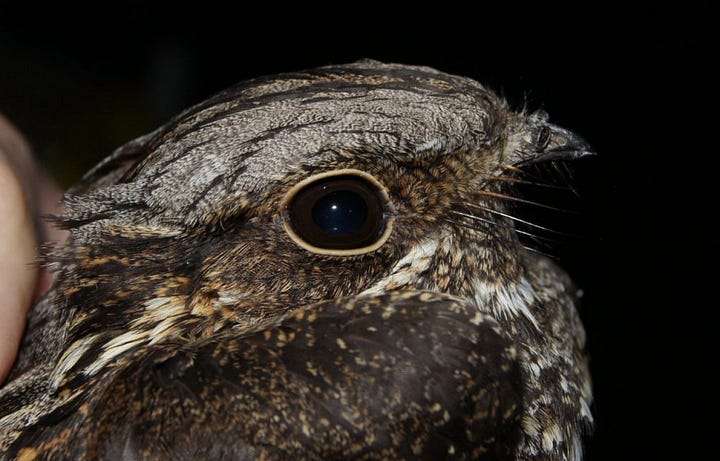
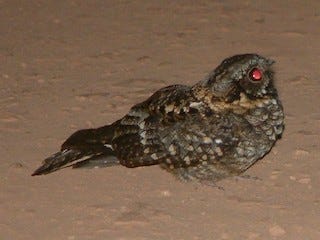
They also have stiff bristles around their beaks - these help them to detect their surroundings, and proximity of insects. Ben also mentioned they were important for stopping insect cases and wing cases from entering their eyes.
Their comb like feet are irrelevant for hunting, although these are used for preening and parasite removal and generally, to keep their feathers in good condition.
They also are useful for self defence, allowing them to give a predator a nasty scratch. They can also use them to perch on awkward surfaces with incredible grip.
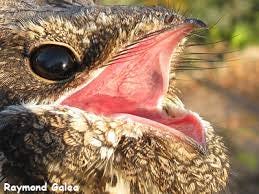
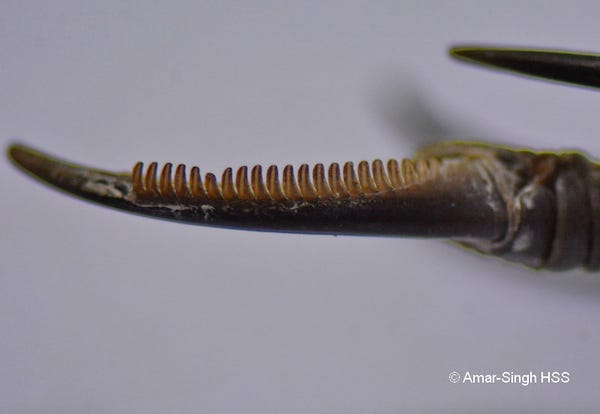
Nesting
They ideally like open, dry, lowland habitats with sparse vegetation so they can hunt insects and nest comfortably.
The females have two clutches of eggs. They aren’t monogamous and will find a different mate for the second clutch.
They breed from late May to August and don’t build a nest, instead laying their eggs directly on the ground. The egg shells are mottled so are naturally camouflaged amongst the scrub.
Once laid, the eggs will be incubated for 20 days, and fledglings will leave the nest around 14 days later.
Why are nightjar’s numbers increasing in the UK?
Ben told me during the walk that it’s a happy tale for the nightjar….
Firstly, it’s a protected species - hurrah! In 1981, Wildlife and Countryside Act protected the bird so it’s illegal to harm a nightjar.
Their numbers are growing due to heathland conservation - like clearing scrub, grazing and managing the woodland, and controlling invasive species.
So on many heathland sites in Surrey, trees and scrub are periodically removed to stop the heathland disappearing into secondary woodland.
So in Surrey’s heathlands:
Trees planted for timber decades ago are now being removed to restore heathland.
Self‑seeded birch and pine are regularly cut to maintain the open character.
Some trees are left deliberately, as scattered trees or copses add variety and benefit certain species.
How can you help the nightjar?
According to Ben, it is important dogs are kept on leads so no to disturb their nesting. It’s important to stick to the paths!
You can volunteer for scrub bashing days on the heathland - the practice of cutting back or clearing scrub vegetation, which includes shrubs, bushes, and small trees.
You can also join conservation bodies that help manage heathlands.
****
I hope you enjoyed reading and please do take a guided walk with Ben! It’s such a special experience <3




